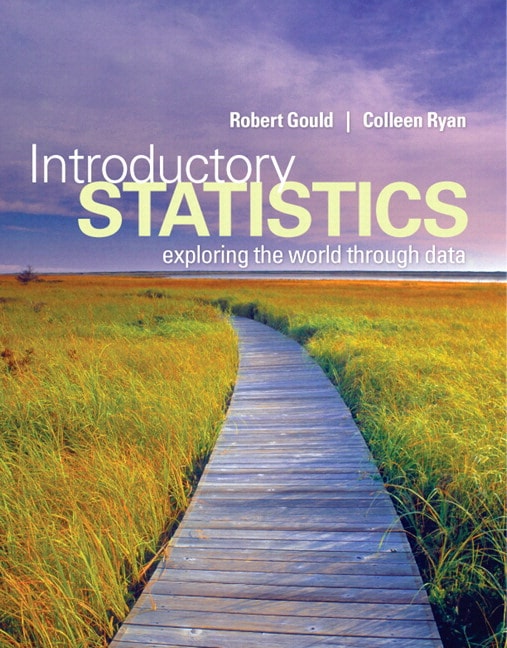
30.00$ - Purchase this E-book
Category : Higher Education
1. Introduction to Data Case Study: Deadly Cell Phones? 1.1 What Are Data? 1.2 Classifying and Storing Data 1.3 Organizing Categorical Data 1.4 Collecting Data to Understand Causality Exploring Statistics: Collecting a Table of Different Kinds of Data 2. Picturing Variation with Graphs Case Study: Student-to-Teacher Ratio at Private and Public Colleges 2.1 Visualizing Variation in Numerical Data 2.2 Summarizing Important Features of a Numerical Distribution 2.3 Visualizing Variation in Categorical Variables 2.4 Summarizing Categorical Distributions 2.5 Interpreting Graphs Exploring Statistics: Personal Distance 3. Numerical Summaries of Center and Variation Case Study: Living in a Risky World 3.1 Summaries for Symmetric Distributions 3.2 What's Unusual? The Empirical Rule and z-Scores 3.3 Summaries for Skewed Distributions 3.4 Comparing Measures of Center 3.5 Using Boxplots for Displaying Summaries Exploring Statistics: Does Reaction Distance Depend on Gender? 4. Regression Analysis: Exploring Associations between Variables Case Study: Catching Meter Thieves 4.1 Visualizing Variability with a Scatterplot 4.2 Measuring Strength of Association with Correlation 4.3 Modeling Linear Trends 4.4 Evaluating the Linear Model Exploring Statistics: Guessing the Age of Famous People 5. Modeling Variation with Probability Case Study: SIDS or Murder? 5.1 What is Randomness? 5.2 Finding Theoretical Probabilities 5.3 Associations in Categorical Variables 5.4 Finding Empirical Probabilities with Simulations Exploring Statistics: "Let's Make a Deal": Stay or Switch? 6. Modeling Random Events: The Normal and Binomial Models Case Study: You Sometimes Get More Than You Pay For 6.1 Probability Distributions Are Models of Random Experiments 6.2 The Normal Model 6.3 The Binomial Model Exploring Statistics: ESP with Coin Flipping 7. Survey Sampling and Inference Case Study: Spring Break Fever: Just What the Doctors Ordered? 7.1 Learning about the World through Surveys 7.2 Measuring the Quality of a Survey 7.3 The Central Limit Theorem for Sample Proportions 7.4 Estimating the Population Proportion with Confidence Intervals 7.5 Margin of Error and Sample Size for Proportions (Optional) Exploring Statistics: Simple Random Sampling Prevents Bias 8. Hypothesis Testing for Population Proportions Case Study: Does Watching Violent TV as a Child Lead to Violent Behavior as an Adult? 8.1 The Main Ingredients of Hypothesis Testing 8.2 Characterizing p-values 8.3 Hypothesis Testing in Four Steps 8.4 Comparing Proportions from Two Populations 8.5 Understanding Hypothesis Testing Exploring Statistics: Identifying Flavors of Gum through Smell 9. Inferring Population Means Case Study: Epilepsy Drugs and Children 9.1 Sample Means of Random Samples 9.2 The Central Limit Theorem for Sample Means 9.3 Answering Questions about the Mean of a Population 9.4 Comparing Two Population Means 9.5 Overview of Analyzing Means Exploring Statistics: Pulse Rates 10. Associations between Categorical Variables Case Study: Popping Better Popcorn 10.1 The Basic Ingredients for Testing with Categorical Variables 10.2 The Chi-Square Test for Goodness of Fit 10.3 Chi-Square Tests for Associations between Categorical Variables 10.4 Hypothesis Tests When Sample Sizes Are Small Exploring Statistics: Skittles 11. Multiple Comparisons and Analysis of Variance Case Study: Seeing Red 11.1 Multiple Comparisons 11.2 The Analysis of Variance 11.3 The ANOVA Test 11.4 Post-Hoc Procedures Exploring Statistics: Recovery Heart Rate 12. Experimental Design: Controlling Variation Case Study: Does Stretching Improve Athletic Performance? 12.1 Variation Out of Control 12.2 Controlling Variation in Surveys 12.3 Reading Research Papers Exploring Statistics: Reporting on Research Activities 13. Inference without Normality Case Study: Electric Rays 13.1 Transforming Data 13.2 The Sign Test for Paired Data 13.3 Mann-Whitney Test for Two Independent Groups 13.4 Randomization Tests Exploring Statistics: Balancing on One Foot 14. Inference for Regression Case Study: Building a Better Oyster Shucker 14.1 The Linear Regression Model 14.2 Using the Linear Model 14.3 Predicting Values and Estimating Means Exploring Statistics: Older and Slower? Table of Contents
Get Introductory Statistics: Exploring the World through Data Plus NEW MyLab Statistics with Pearson eText Package by Robert Gould, University of California, Los Angeles Colleen N. Ryan, California Lutheran University


0 commentaires:
Enregistrer un commentaire